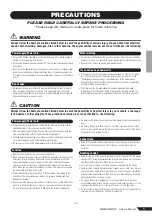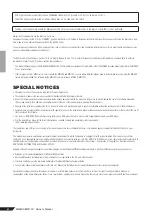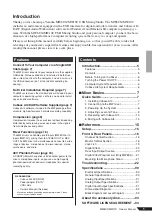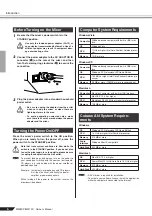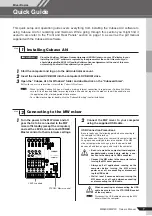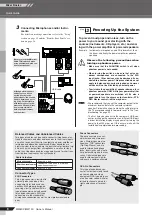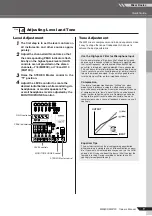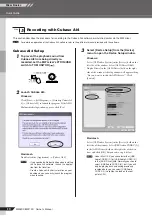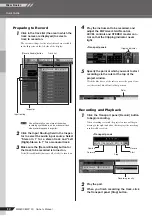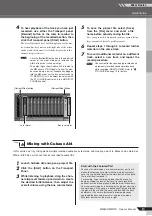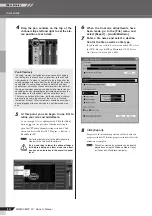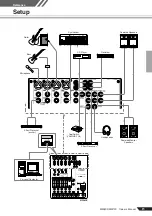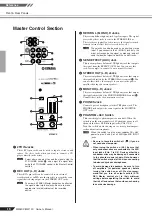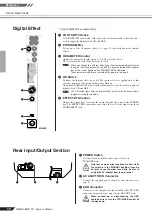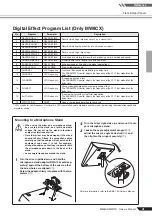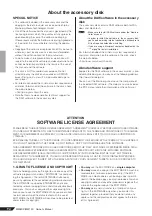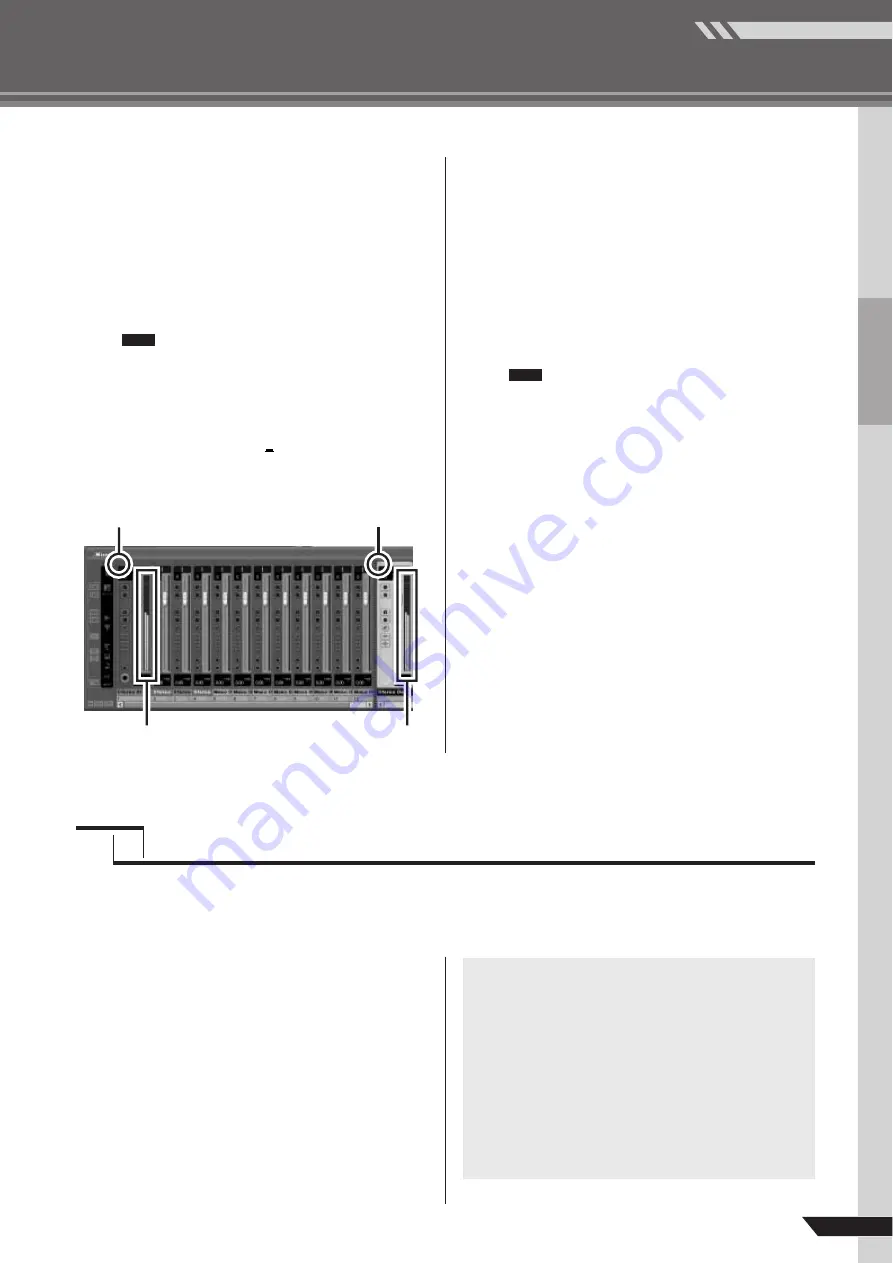
Mixer Basics
Quick Guide
MW8CX/MW10C Owner’s Manual
13
4
To hear playback of the track you have just
recorded, use either the Transport panel
[Rewind] button or the ruler to rewind to
the beginning of the recorded section, then
click the Transport panel [Start] button.
The overall playback level will be displayed via the mas-
ter section bus level meter on the right side of the mixer
window, and the channel level will be displayed via the
channel strip level meter.
• Click the [Narrow/Wide] button in the upper left
corner of the mixer window to increase the
width of the mixer’s channel strips.
• The output signal from Cubase AI4 is routed to
the MW mixer’s 2TR IN inputs. To hear the play-
back sound via a pair of headphones plugged
into the MW mixer, set the bus select switch to
TO MONITOR (
) and adjust the volume with
the 2TR IN/USB control and the MONITOR/
PHONES control.
5
To save the project file select [Save]
from the [File] menu and enter a file
name before actually saving the file.
Save your project file frequently to insure against losing
large amounts of data if a problem occurs.
6
Repeat steps 1 through 5 to record further
material on the same track.
7
To record additional material on a different
track, select a new track and repeat the
record procedure.
You can monitor the sound being recorded and
a previously recorded sound simultaneously
while recording (MONITOR MIX). Refer to “
B
2TR IN/USB” on page 19 for details.
In this section we’ll try mixing down multiple recorded audio tracks to stereo, and creating a wav file. Mixes can be stored as
WAV or AIFF files, which can then be recorded to audio CDs.
1
Launch Cubase AI4 and open a project file.
2
Click the [Start] button on the Transport
Panel.
3
While listening to playback, drag the chan-
nel strip level faders up and down to create
the desired initial balance, then adjust the
overall volume using the bus volume fader.
NOTE
Level meter
Bus level meter
[Narrow/Wide] button
[Narrow/Wide] button
NOTE
Step
6
Mixing with Cubase AI4
Start with the Featured Part
You can start working on a mix from almost any part, but it
makes the most sense to start with the main instrument or
vocal. Set up an initial level for the main part, and then build
the rest of the mix around it.
For example, if you’re mixing a piano trio with a vocalist,
begin by setting the level of the vocal track at around the
nominal level, and then gradually add the other instruments.
Your choices will also be influenced by the type of music you
are working on. If the song is a ballad you might want to add
the piano to the mix after the vocal, and then add the bass
and drums. If it’s a more rhythmically oriented piece you
could add the bass and drums first, and then the piano.
Whatever best serves the music is right.



